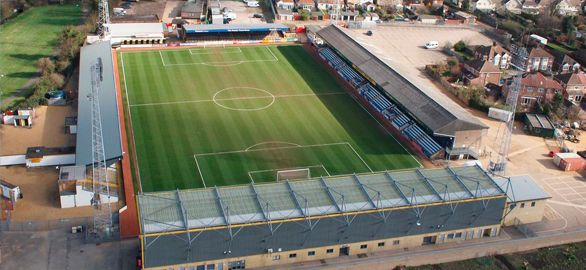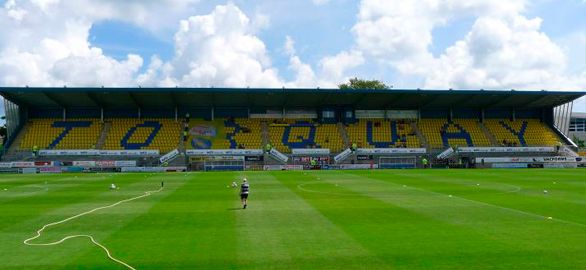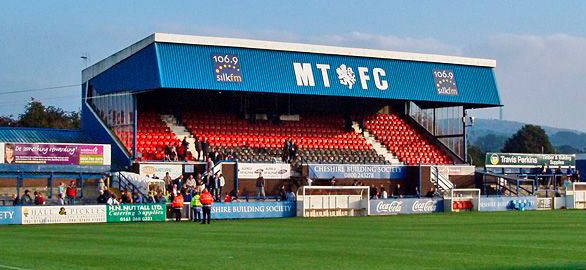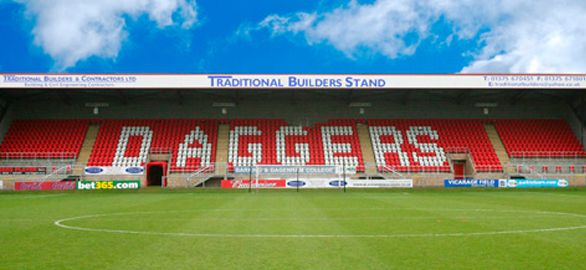New stadiums: Cambridge, Torquay, Macclesfield i Dagenham
source: StadiumDB.com; author: StadiumDB.com team
 These clubs are easily recognised by football fans in England, with or without playing in upper leagues. Their stadiums also have a story to tell. You can get a taste of it at StadiumDB.com today!
These clubs are easily recognised by football fans in England, with or without playing in upper leagues. Their stadiums also have a story to tell. You can get a taste of it at StadiumDB.com today!
Advertisement
Abbey Stadium (9,617)
This Cambridge-based stadium was donated to United in 1931 along with a grandstand accommodating players (not opened until 1934) by Henry Francis and has since been the home of CUFC.
Since 1934 it was gradually improved until finally being a fully enclosed ground in 1954. In 1970 floodlights were first lit and the club played Chelsea to celebrate it, drawing largest ever crowd of 14,000.
In 1990s United had a chance to win Premier League promotion spot, but instead went down by four tiers, thus losing any hope for stadium improvement. Officials refused to installed the recommended plastic seats all around the ground, arguing they would only do that when advancing to a league requiring such facilities.
In 2004 further financial trouble caused the club to sell Abbey Stadium to a private entity. Despite attempts by fans to buy it back, the ground still doesn't formally belong to United.
Plainmoor (6,500)
Though formally in use by Torquay United since 1921, the field in Torquay's Plainmoor district was in use (mostly by rugby teams) already in the nineteenth century. In 1904 the football side Ellacombe moved in. It later merged with United to form Torquay Town, which then merged with Babbacombe in 1921 and reverted to the name Torquay United, becoming the owner and sole tenant of the stadium.
First structures on site were mostly wooden and not too strong, which was proven in 1930, when roof of the main stand was blown off. In the following years not much has changed, but popularity of the club managed to outgrow the stadium, seeing a record crowd of over 21,000 in 1955 FA Cup campaign. The same year Plainmoor became one of the first stadiums in lower leagues to get floodlights.
Current stadium is the outcome of 1990s reforms. New northern stand (seated) and revamped west and south stands were built (both terraced). In 2012 the largest one to date was opened in the east.
Moss Rose (6,355)
This modest stadium located in southern suburbs of Macclesfield is one of England's older grounds, dating back to 1891.
Currently it has four independent stands: main on in the east (London Road), largest one in the west (covered, seated) and two end zones – one uncovered and terraced (for away fans) and one more covered and seated.
Victoria Road (6,078)
This little known stadium in eastern London was used first in 1917, but could hardly be called a proper football stadium until 1955. That's when Dagenham FC moved in and carried out a series of renovations: new main stand in 1955, gates and toilets in 1956, floodlight in 1957 and north side cover in 1958.
This allowed the stadium to survive almost unchanged until 1990s, when changes had to come. With Redbridge FC sharing the ground and eventually merging with Dagenham, there was enough funding to further renovate the stadium.
More changes came in 2001 with a brand new seated south stand (and new floodlight masts), while the tallest western stand was erected in 2009.
Over the years Dagenham managed to reach a record crowd of 7,200 in 1967. After the merger with Redbridge FC similar crowds weren't possible, mostly due to all-seater rule being introduced. In its current configuration the stadium has a record attendance of 5,949.
Advertisement

 StadiumDB
StadiumDB


